NRAO eNews
Volume Vol#, Issue Iss#
Day# Month# Year#
NRAO eNews
Volume Vol#, Issue Iss# • Day# Month# Year#

Upcoming Events

7th VLA Data Reduction Workshop
Oct 7 - 18, 2019 | Socorro, NM

ALMA2019: Science Results and Cross-Facility Synergies
Oct 14 - 18, 2019 | Cagliari, Sardinia, Italy

Jansky Lecture: Dr. Anneila Sargent
Dec 5, 2019 | Charlottesville, VA

Breakthrough Science with the Atacama Large Millimeter/submillimeter Array
Jan 6, 2020 | Honolulu, HI

The Scientific Quest for High Angular Resolution
Jan 7, 2020 | Honolulu, HI

NRAO Town Hall
Jan 7, 2020 | Honolulu, HI

Compact Objects and Energetic Phenomena in the Multi-Messenger Era
Jul 14 - 16, 2020 | Saint Paul, MN
ngVLA Project News
Reference Design Release
On 6 August, the next generation Very Large Array (ngVLA) project completed the public release of the ngVLA Reference Design. The reference design is a low-technical-risk, costed concept that supports the key science goals for the facility, and forms the technical and cost basis of the ngVLA Astro2020 Decadal Survey proposal. The compendium includes 56 technical documents (1400+ pages) and represents the work of more than 54 engineers and scientists contributing to the project. While led by the NRAO project team, the author list includes many collaborators from the U.S. and international radio astronomy community who have contributed their expertise to the project. Many more – Science Book authors; Science Advisory Council, Science Working Group, and Technical Advisory Council members – have contributed to the definition of the science case and science requirements, or contributed through critical review.
This technical compendium describes the ngVLA system from end-to-end, and provides a snapshot of the technical development of the facility concept as of August 2019. As the first technical baseline, it has gaps and minor inconsistencies that will be addressed in advance of the system conceptual design review, but it presents the clear and substantive progress that has been made in defining a realizable ngVLA facility concept.
Please visit the ngVLA Project Documents page for access to the ngVLA Reference Design materials. We thank all who have contributed to the science case and technical definition of the ngVLA concept and this supporting system design.
AAS Special Session: The Scientific Quest for High Angular Resolution
On 7 January 2020, the NRAO and the ngVLA Project will convene a Special
Session on The Scientific Quest for High Angular Resolution at the American Astronomical Society (AAS) winter meeting in Honolulu, Hawaii.
This Special Session will highlight recent scientific breakthroughs enabled by imaging at high angular resolution. It will feature a session of invited oral presentations from 10:00 a.m. to 11:30 a.m. local time, plus an associated day-long poster session with contributed presentations.
Please consider contributing to the associated poster session. When submitting a contributed poster abstract to the AAS, you will have the option of requesting that your presentation be included in this Special Session. Abstracts are due 8 October. The ngVLA Project can assist with poster printing and shipping, if requested. Special Session presenters are also eligible to present elsewhere at the meeting.
APC White Paper Submission to Astro2020
On 10 July, the ngVLA Project submitted an APC White Paper entitled
ngVLA: The Next Generation Very Large Array for consideration by the National Academies' Astro2020 Decadal Survey.
The ngVLA will be a transformative, multi-disciplinary general-use scientific facility that will advance our knowledge of the Universe and our place within it. By delivering an order of magnitude improvement in both sensitivity and angular resolution compared to existing and planned radio facilities at frequencies spanning 1.2-116 GHz, the ngVLA will uniquely tackle a vast range of high-priority scientific questions in modern astronomy, physics, chemistry, and biology.
The ngVLA design is the result of a close collaboration between the NRAO and the broad U.S. and international science and technical communities. The ngVLA Project wishes to extend its heartfelt thanks to those communities.
Compact Objects and Energetic Phenomena in the Multi-Messenger Era

The NRAO is pleased to announce that it will convene a science conference titled Compact Objects and Energetic Phenomena in the Multi-Messenger Era. This conference will be held 14-16 July 2020 in Saint Paul, Minnesota, USA. Details and deadlines will be posted in the coming weeks on the conference webpage.
Now, at the dawn of the multi-messenger era, electromagnetic waves, high-energy particles, and gravitational waves are jointly revealing previously-hidden clues into the workings of compact objects. These clues are guiding observers, theorists, and computational researchers to new and deep insights about compact objects. Stunning progress has been made in understanding the energetic mergers, and merger aftermaths, of neutron stars and stellar-mass black holes. This promises to illuminate evolutionary studies of black holes on all mass scales, whether they are alone, in bound binaries, or merging. The role of other compact objects – like supernovae, pulsars and active galactic nuclei – as Nature's particle accelerators can now be examined widely and in detail.
Since size equates to time, insights about compact objects are benefiting hugely from multi-messenger studies in the time domain. This conference will emphasize the state of research on compact objects that leverages on multi-messenger information. The conference will also be forward-looking to help planners define an interoperable suite of multi-messenger facilities for the 2030s and beyond.
ALMA Program News
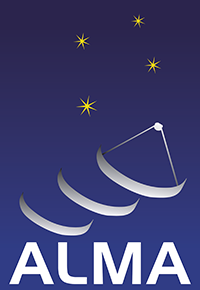
Cycle 7 Time Allocation
On 1 October 2019, the new observing cycle (Cycle 7) will begin at ALMA with the array in C43-4 configuration (0.78 km maximum baseline, 100 GHz beam 1.0 arcsec). Details may be found at the ALMA Science Portal. Successful proposers must submit final observing instructions (Phase 2 Science Goals) through the OT or risk project cancellation.
Cycle 7 Supplemental Call
The Joint ALMA Observatory is now accepting observing proposals for Cycle 7 that request to use the Atacama Compact Array (ACA) in stand-alone mode. Following the Main Call by five months, the Supplemental Call will maximize the scientific output of the ACA by allowing more timely science to be proposed. Instructions on how to submit proposals can be found on the Cycle 7 Supplemental Call web page.
Users of any nationality or affiliation are invited to submit proposals before the deadline of 15:00 UT on Tuesday 1 October 2019.
Proposals accepted in the Supplemental Call will be scheduled for observations between January 2020 and September 2020. Scheduling of 2500 hours is anticipated.
Proposals accepted in the Cycle 7 Supplemental Call will receive priority Grade C and will have lower priority than ACA proposals accepted in the Cycle 7 Main Call. Proposals submitted in the Supplemental Call will be peer reviewed using a distributed system in which each proposal team selects a designated reviewer to participate in the review process. The review process is described in detail in the Supplemental Call documentation.
Cycle 6 Science Observing
The ALMA antennas have been contracting from their most extensive configurations and early September has found the array contracting to its C43-6 configuration (2.5 km maximum baseline, 100 GHz beam 0.31 arcsec). ACA observations continue. The array will gradually move to shorter baselines over the next few months, ending Cycle 6 in the C43-6 configuration.
ALMA North American Development Studies Cycle 7 / FY2020
Cycle 7 ALMA Development Studies are reviewed, nominated, approved by NRAO and NSF, and in the process of funding. Eleven proposals were received in response to the North American ALMA Development Studies Call for Cycle 7 to begin in Fiscal Year 2020, coming from 56 prospective investigators at 11 institutions, and oversubscribing expected funding by over three-to-one These proposals were reviewed by a panel of 12 Study reviewers. The rankings of the proposals from the review suggested proposals for funding consideration. The highest ranked proposals fit within an increased budget, the strategic goals of North American ALMA Development and the ALMA2030 goals very well. The eight most highly ranked proposals involve 33 investigators at ten institutions. The set was comprised of five hardware studies and three software studies.
Hardware-oriented Studies
- Ubiquitous Quantum-Limited Wideband 4-Kelvin Amplifiers for Radio Astronomy (Noroozian et al. / GSFC, NRAO) .
- Investigation into Improvement of FE LO Sideband Noise for ALMA Band 6 (Saini et al. / NRAO) .
- Band 6v2 SIS Mixer Development (Kerr et al. / NRAO).
- High-level Design and Integration of NRC TALON based Correlator for Increased Channels, Bandwidth and Baselines (Pleasance / NRC).
- ALMA Central LO Improvements and Upgrades (Jacques / NRAO).
Software-oriented Studies
- Link CASA to the astropy Ecosystem (Ginsburg / NRAO, University of Florida).
- ALMA Archive Research using ADMIT (Teuben / University of Maryland)
- ARCADE: ALMA Reduction in the CANFAR Data Environment (Kirk / NRC)
Following the Director’s review of these selections the inclusion of one additional study was recommended and the conversion of another to an ALMA Small Development Project, for submission to the ALMA Director.
Fourth ALMA Science Conference
The ALMA partnership is organizing the Fourth ALMA Science Conference in Cagliari (Sardinia, Italy) 14 – 18 October 2019. A schedule of talks is available. Owing to the large response, registration has closed and additional prospective participants may register on a waiting list basis only.
AAS Special Session
On Monday 6 January from 2:00 - 3:30 p.m. local time, the NRAO will convene a Special Session Breakthrough Science with the Atacama Large Millimeter/submillimeter Array featuring results from ALMA Large programs and related science, at the AAS winter meeting in Honolulu, Hawaii. The speaker list includes: Sean Dougherty, Fabian Walter, Eva Schinnerer, Dan Marrone, Ilse Cleeves, and Sean Andrews.
NAASC Topical Science Conference/Workshop Grants
Applications for FY2020 are now open! For this first announcement, applications can be submitted anytime for upcoming conferences in Calendar Year 2020. Decisions will be announced within 4-6 weeks of submission. Applications will be accepted while funds are available.
ALMA Ambassadors
Applications for FY2020 are now open! Please send completed application and current resume to Katelyn Sevin no later than 21 October 2019 5 p.m. ET.
Robert L. Brown Outstanding Doctoral Dissertation Award
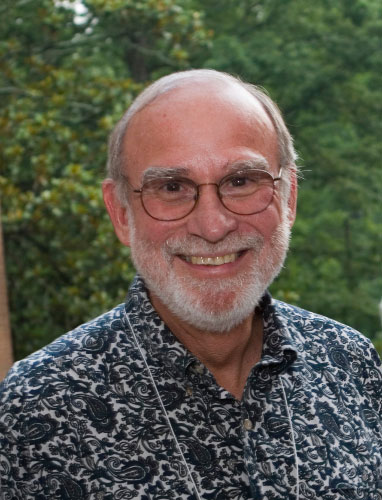
The Robert L. Brown Outstanding Doctoral Dissertation Award is administered by Associated Universities, Inc. (AUI) and the NRAO on behalf of Bob Brown’s friends and family to honor Bob’s life and career. The Award is given each year to a recent recipient of a doctoral degree from any recognized degree granting institution in the United States, and is substantially based on new observational data obtained at any AUI operated facility and considered to be of an exceptionally high scientific standard.
Award
The Award is available to degree recipients of any nationality and consists of $1000, a framed certificate, and an invitation to give a colloquium at the NRAO.
Application Guidelines
To be eligible, the applicant must have successfully defended the thesis during the calendar year of the Award. The deadline for receipt of applications and supporting materials for the 2019 Award is 31 December 2019.
Applicants should send an e-mail describing their dissertation, the date of their successful thesis defense, the date of the degree award, and the name and contact information of the primary thesis supervisor to RLBrownAward@nrao.edu. A copy of the thesis as a pdf file should be sent by e-mail to the same address or made available via a link given in the email. Published papers or papers in press, or portions thereof, based substantially on the dissertation should accompany the application. Verification of the successful thesis defense and statement that the applicant has successfully completed all university requirements for the Ph.D. should be sent directly by the appropriate university authority to RLBrownAward@nrao.edu.
Selection
The winning applicant will be selected by a committee appointed by the NRAO Director. If, in the opinion of the committee, in any given year none of the theses are sufficiently meritorious, the award will not be given in that year. All questions should be addressed to RLBrownAward@nrao.edu.
Dr. Martha P. Haynes Awarded the 2019 Bruce Gold Medal
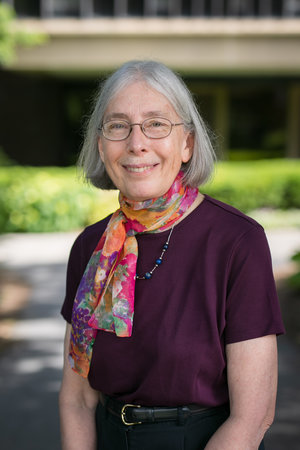
Dr. Martha P. Haynes
The Astronomical Society of the Pacific (ASP) has announced the 2019 recipient of its most prestigious award, the Catherine Wolfe Bruce Gold Medal is Dr. Martha P. Haynes, an international leader and pioneer of radio studies of galaxies.
Dr. Haynes has made major contributions to our understanding of the composition, interactions, distribution, and evolution of galaxies in the Universe throughout an impressive research career spanning over 40 years. Haynes is an internationally recognized leader and pioneer in radio studies of galaxies, specifically observations of the 21 cm wavelength of neutral hydrogen (HI).
Haynes has also been a leader and advocate for the development of state-of-the-art instruments to expand our ability to probe the radio universe. She provided oversight and vision to the improvements made to the Arecibo Radio Telescope in Puerto Rico, culminating with the ALFALFA HI Survey, which covered 1/6th of the sky and detected 31,000 galaxies. Haynes and her students and colleagues have also studied large clumps and clusters of galaxies at immense scales of up to hundreds of megaparsecs. As one of her nominators stated, Haynes has “completely altered our view of the scale of inhomogeneities in the Universe, which is now recognized as a fundamental tenet of cosmology.” As Chair of its Board of Directors, Haynes currently spearheads the Cerro Chajnantor Atacama Telescope (CCAT) initiative to construct the high-altitude, CCAT-prime submillimeter radio telescope in northern Chile that will peer into the early Universe to investigate galaxy and star formation. She is also the scientific lead of the ALFALFA Undergraduate Team which promotes collaborative research by faculty and students at 23 academic institutions, most serving mainly undergraduates, from across the U.S. and Puerto Rico.
Haynes has authored over 272 refereed publications with over 16,000 citations, including 41 refereed publications with more than 100 citations each. Haynes has been awarded the Henry Draper Medal by the National Academy of Sciences (1989), elected to the American Academy of Arts and Sciences (1999) and National Academy of Sciences (2000), became a Fellow of the American Association for the Advancement of Science (2000), and has been appointed as a distinguished lecturer at a number of institutions, including Princeton University and the Harvard-Smithsonian Center for Astrophysics.
The Astronomical Society of the Pacific’s Catherine Wolfe Bruce Gold Medal was established in 1898 by Catherine Wolfe Bruce, an American philanthropist and patroness of astronomy. The ASP presents the medal annually to a professional astronomer in recognition of a lifetime of outstanding achievement and contributions to astrophysics research. It was first awarded in 1898 to Simon Newcomb. Previous recipients of the Bruce Medal include Giovanni V. Schiaparelli (1902) Edwin Hubble (1938), Fred Hoyle (1970), and Vera Rubin (2003).
EPO Posters
Education and Public Outreach (EPO) has developed a series of high-resolution posters and infographics showcasing recent discoveries by astronomers using the ALMA Observatory. These print-ready posters are available in easy to download .jpgs and scalable .pdf files.
Storms Brewing Beneath the Atmosphere of Jupiter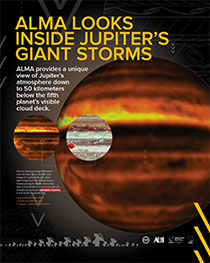 |
Star Formation across the Universe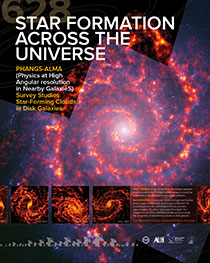 |
Interferometry Explained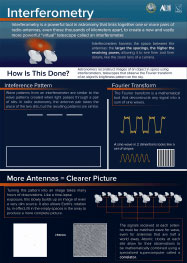 |
Storms Brewing Beneath the Atmosphere of Jupiter |
Star Formation across the Universe |
Interferometry Explained |
Recent Media Releases
|
Towering Balloon-like Features Discovered near Center of the Milky Way |
|
|
Image Release: ALMA Shows What’s Inside Jupiter’s Storms |
Career Opportunities
Associate Scientist/Research Engineer: The NRAO seeks a Research Engineer with expertise in millimeter/submillimeter wavelength electronics. The selectee will be a member of the NRAO Scientific Staff and will lead the millimeter/sub-millimeter receiver group (approximately 7 engineers and technicians) in the Central Development Laboratory (CDL) in Charlottesville, VA. The Research Engineer will play a leading role in a program of design and development of low-noise millimeter/sub-millimeter wavelength instrumentation for astrophysical observations. This has been identified as a key NRAO technology for the next generation of radio telescope instrumentation and is a high-priority component of CDL’s strategic plan. The position entails both independent research and functional responsibilities. The selectee will work with colleagues to develop next generation millimeter and submillimeter low-noise receiver technology that may be deployed on ALMA and on future instruments.
Astronomer (Tenure Track): The NRAO is seeking to appoint three new tenure-track scientists, one in each of the following focus areas: astronomical instrumentation and technologies, ALMA science, and ngVLA key science. The appointment in the astronomical instrumentation and technologies focus area will be based at the Central Development Laboratory (CDL) in Charlottesville, VA. The appointee will carry out R&D in one or more of the areas of CDL focus, developing technology and instruments essential for the future needs of world-class radio astronomy research, working where appropriate in partnership with the astronomy community and industry. The appointment for the ALMA science focus will be to the staff of the North American ALMA Science Center (NAASC) in Charlottesville, VA. The appointee will be expected to play a significant role in contributing to the science relevant to ALMA, including identifying and developing future scientific priorities for ngVLA and the NRAO, and building support for those priorities within the North American and international astronomy community. The appointment for the ngVLA key science area will be to the staff of NRAO’s New Mexico Operations department in Socorro, New Mexico. NRAO activities in New Mexico comprise the operation of the Very Large Array (VLA) and the Very Long Baseline Array (VLBA), and a variety of technical support functions for ALMA-NA, as well as being the center of the next generation VLA (ngVLA) design and development project. The appointee will be expected to contribute to the science relevant to the ngVLA, including identifying and developing future scientific priorities for ngVLA and the NRAO, and building support for those priorities within the North American and international astronomy community.
Assistant Director for Science Support & Research: The NRAO is seeking to recruit an Assistant Director for Science Support & Research (AD/SSR). Science Support & Research (SSR) is the Observatory-wide function supporting all scientific users of NRAO instruments, and overseeing the scientific research of the NRAO staff. This is an opportunity for an experienced scientist, with a track record of management and leadership, to take on an influential role in the senior management team of one of the world’s leading observatories. The appointee will help shape the mode of delivery of data to a global community of astronomers (the Science-Ready Data Products (SRDP) project), and contribute to the definition and planning of the next generation VLA. The AD/SSR is responsible for managing time allocation and the proposal handling processes for the VLA and VLBA which are operated by NRAO, and for the GBT which is operated by the Green Bank Observatory (GBO). The AD/SSR is tasked with ensuring a uniform and effective interface for NRAO’s and GBO’s user communities across all their telescopes and taking account of the ALMA review process which is the responsibility of the Joint ALMA Observatory. The AD/SSR manages staff responsible for common scientific services provided in support of our instruments, and coordinates outward-facing activities across all sites to minimize duplication and achieve optimal efficiency in support of all users of NRAO facilities.
Scientist/ Research Engineer (Open Rank): The Central Development Laboratory (CDL) at the National Radio Astronomy Observatory seeks a Research Engineer with expertise in novel millimeter-wave detectors, low temperature sensors, superconductors, and millimeter/submillimeter wavelength electronics for astrophysical observations. The position is at the CDL campus in Charlottesville, VA, and reports to the Director of the CDL. The selectee will be a member of the NRAO Scientific Staff and will lead the observatory’s effort in developing the next-generation of millimeter wave/sub-millimeter wave detectors, to include leading our on-going work on Traveling-Wave Kinetic Inductance Parametric (TKIP) amplifiers. The selectee will also be a member of CDL’s millimeter/sub-millimeter receiver group currently working on a program of Superconductor-Insulator-Superconductor (SIS) junction-based designs in the development of low-noise millimeter/sub-millimeter wavelength instrumentation for use on the ALMA telescope and on other instruments around the world.
From the Archives
Ellen Bouton

[click to enlarge]
About this month's photo: Installing the traveling feed system on the 300-foot Telescope in Green Bank in September 1969. An article in The Observer for November 1969, written by Troy Henderson and Ken Cottrell says, "Following the discovery of pulsars, in mid-1968 a visiting research group from Harvard made the proposal for a second traveling feed system, specifically for pulsar research. A joint arrangement for design and construction was worked out, and fabrication began at the NRAO shops on November 1, 1968. The feed assembly consists of a set of rails and a feed carriage which is driven along the rails at various rates. The rails are 51 feet long allowing for 46 feet of carriage travel between limits."
From the Archives is an ongoing series illustrating NRAO and U.S. radio astronomy history via images selected from our collections of individuals' and institutional papers. If readers have images they believe would be of interest to the Archives, please contact Ellen Bouton.

